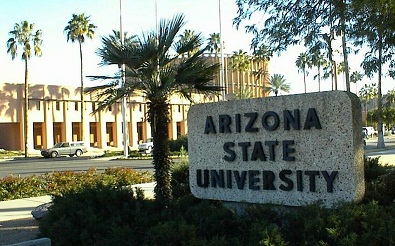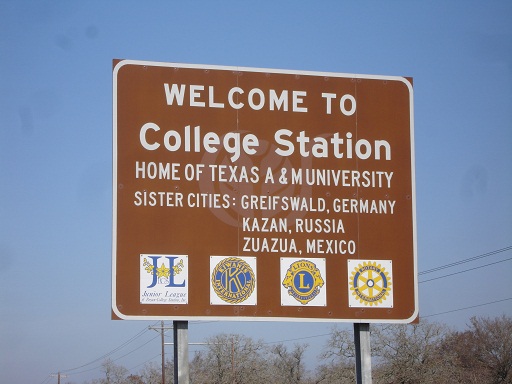College towns are home to academic opportunities, new socialexperiences, crowds of football fans — and plenty of young adultsin need of financial services. By touting conveniences such ason-campus ATMs, student checking products and financial educationresources, snagging new members is usually not a problem for creditunions located in college towns. But when student members graduate,find jobs and move out of town, credit unions often faceabandonment.
|Five college town credit unions from across the country toldCredit Union Times what they're doing to boost theirmember retention rates.
|From offering remote deposit capture to showing up at local jobfairs to marketing auto loans, they're implementing strategies withthe same goal in mind: make sure their members stay members afterthey've walked across the graduation stage.
|Click through the slideshow to find out what these credit unionsare doing to convince students that membership should last alifetime.
|1. USC Credit Union (Los Angeles, $361 million inassets)
|Los Angeles is much more than a university town, but with morethan 17,000 undergraduate students at the University of SouthernCalifornia, USCCredit Union has many opportunities to do business with youngadults.
|The 58,700-member USC CU's efforts to retain memberspost-graduation have paid off — USC alumni comprise its largestmember base, and more than 80% of its alumni members started out asstudent members, according to Michael Kim, chief marketing officerfor USC CU.
|Kim said USC alumni represent the credit union's largest depositbase and its second largest loan base. To help convince eachgraduating class to stay on as members, the credit union offersspecial promotions to new graduates and focuses on educatingstudent members about the use of electronic banking services andthe Co-Op Shared Branching Network.
|USC CU offers a mobile banking app for iPhone, Android andBlackberry, and is gearing up to launch a remote deposit captureservice.
|“Probably our biggest challenge has been overcoming the notionthat USC CU is great while you're on campus and that access becomeslimited once students graduate and move out across country,” Kimsaid. “It's our goal to get students so accustomed to all of ourmobile and electronic services that the thought of closing theiraccount never enters their mind. Coupled with our great value andservice, it becomes a no-brainer to stick with their alma mater'scredit union.” 
2. Alabama Credit Union (Tuscaloosa, Ala., $504 millionin assets)
|The 47,200-member Alabama CU serves two universities down South: Tuscaloosa'sUniversity of Alabama, home of the national champion Crimson Tidefootball team, and the University of Alabama-Huntsville.
|Alabama CU Marketing Coordinator Kelley Jones explained thatwhile retaining members post-graduation has always been achallenge, it can be done. As an example, she noted the creditunion's president/CEO, Steve Swofford, joined the credit union as aUniversity of Alabama student.
|In its 11 years of serving students at these two stateuniversity system schools, the credit union has developed a numberof member retention strategies. First, its staff focuses onproviding personalized service to members while they're in college– the kind of service they won't want to let go of when theygraduate, Jones said.
|“This (service) starts with our three on-campus branches, twoserving the University of Alabama and one serving University ofAlabama-Huntsville,” Jones said. “We market to these students andtheir parents heavily when they arrive on campus as freshmen andwork diligently to quickly open their accounts during their busyfreshman orientation visits.”
|Alabama CU's product list includes online banking, mobile apps,e-statements, online bill pay, remote deposit capture, platinumcredit cards with limits of $100 and participation in the Co-opShared Branching Network, all of which offers convenience tostudents traveling between Tuscaloosa and their parents' homes,Jones said.
|Online account opening services will soon be added to the menu.And to make the transition easy for members traveling or movingoutside of Alabama CU's primary service area, the credit unionwaives its usual 30-day credit union service center account accessrestriction.
|To stay fresh in new graduates' minds, Jones said the creditunion participates in job fairs and graduation events at the twouniversities, and markets special offers to this particulardemographic.
|“Overall, retaining members post-graduation is a difficulttask due to students who move out of state,” Jones said. “But if astudent remains in our area, we usually have a lifelong member.” 
3. Arizona State Credit Union (Phoenix, $1.35 billion inassets)
|Arizona State University is also connected to the 124,700-memberArizona State CU. The credit union reaches out to students ofthe university, which has campuses in Phoenix, Tempe and Mesa, withtargeted offers of credit and other financial products.
|Some of its more forward-thinking services include mobilebanking, mobile alerts and atHome Deposit, a remote deposit capturesolution.
|Arizona State CU's online and mobile banking solutions are keyto retaining recent graduates who move out of the credit union'sprimary service area, said Paul Stull, Arizona State CU's seniorvice president of strategy and brand.
|“Relocation used to be a big issue with graduating students,”Stull said. “However, that is much less of a problem today with thevariety of electronic services available. Debit cards, iPhone apps,online banking and bill pay, as well as the ability to open andfund accounts online, are very portable features and are imperativeto students' relationships with their credit unions.”
|Stull also said the credit union focuses on one primary productin its quest to keep members after they graduate — the auto loan.Arizona State CU's auto loan program offerings include a vehicleservice plan, a loan protection plan and a guaranteed assetprotection plan.
|“The most important method of retention is with an auto loan,”Stull said. “People in this segment are ready for their first job,and for many of them, an automobile is a big part of thattransition.” 
4. Idaho State University Federal Credit Union(Pocatello, Idaho, $135 million in assets)
|Idaho State University FCU expanded its field of membershipfrom Idaho State University faculty and staff to include universitystudents and alumni, as well as the faculty, staff and students ofmany southeastern Idaho school districts, in 1969.
|Now with 17,600 members, the credit union faces unique memberretention challenges because the Idaho State University studentbody is non-traditional. While some students attend for four years,many choose to pursue a degree that only takes between eight monthsand two years to finish, in a field like cosmetology, medicalassisting or welding, explained Rick Cheatum, the credit union'smarketing manager.
|Cheatum said Idaho State University students also tend to beolder than those at traditional, four-year universities, in partbecause in Pocatello, some high school graduates attend collegefollowing a church mission or military service.
|“In some ways this has helped us, because non-traditionalstudents might have families,” Cheatum said. “They might be buyinghomes, or their second or third cars, so there is a need forfinancial products.”
|The credit union strives to build relationships with memberswhile they're in college, Cheatum said. It pushes its onlineservices, as well as its all-in-one student ID/debit card product,he said.
|“Some students are only here for a few months, so we do our bestto capture them as freshmen,” Cheatum said. “The relationship thatwe build depends on how long they are in the university setting.” 
5. Aggieland Credit Union, College Station, Texas (abranch of Greater Texas Federal Credit Union, Austin, Texas, $507million in assets)
|The home of the Texas A&M University Aggies is also the homeof Aggieland CU, a branch of the 67,600-member Greater Texas FCU.In 1992, Greater Texas FCU acquired the College Station-based TexasAggie FCU; its name was changed two years later to AggielandCU.
|Aggieland CU caters to university student members at three ofits Texas branches — two in College Station and one in Bryan. Likemany university-oriented credit unions, Aggieland CU focuses onmarketing its remote banking options to keep serving members whenthey graduate and move out of College Station, said Jason Goodman,the credit union's vice president and a Texas A&M Universitygraduate.
|The credit union's remote services include account access viathe Co-Op Shared Branching Network, online banking, online billpay, remote deposit capture, electronic statements and onlineaccount transfers.
|“It's a constant focus and effort to continue the relationshipwith our members so that we are there for their needs as they moveforward in life,” Goodman said.
Complete your profile to continue reading and get FREE access to CUTimes.com, part of your ALM digital membership.
Your access to unlimited CUTimes.com content isn’t changing.
Once you are an ALM digital member, you’ll receive:
- Critical CUTimes.com information including comprehensive product and service provider listings via the Marketplace Directory, CU Careers, resources from industry leaders, webcasts, and breaking news, analysis and more with our informative Newsletters.
- Exclusive discounts on ALM and CU Times events.
- Access to other award-winning ALM websites including Law.com and GlobeSt.com.
Already have an account? Sign In
© 2024 ALM Global, LLC, All Rights Reserved. Request academic re-use from www.copyright.com. All other uses, submit a request to [email protected]. For more information visit Asset & Logo Licensing.









